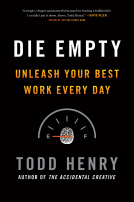
Mathematics the Truth
Moving Mathematics Teaching into the Age of Quantum Mechanics and Relativity
by Malcolm Cameron
This title was previously available on NetGalley and is now archived.
Send NetGalley books directly to your Kindle or Kindle app
1
To read on a Kindle or Kindle app, please add kindle@netgalley.com as an approved email address to receive files in your Amazon account. Click here for step-by-step instructions.
2
Also find your Kindle email address within your Amazon account, and enter it here.
Pub Date Oct 02 2017 | Archive Date Oct 15 2017
Description
Mathematics the Truth
‘Moving mathematics teaching into the age of quantum mechanics and relativity.’
by Malcolm Cameron
“Serious, light-hearted, insight.”
“Shakes mathematics teaching icons …”
“Rescues mathematics from a black hole.”
Currently mathematics is taught like a Latin, without motivation, restricted to the period from Euclid in the BC to the Renaissance.
This thinking degrades mathematics which is fundamental. Without mathematics sciences are merely observational nature study, engineering is trial and error, while technology is only training in use of imported stuff anyway.
Mathematics is the great philosophical basis for understanding the universe from the Quantum to Cosmology and Relativity, its history and future. Citizens ought to know what is happening in these subjects, and in experiments probing the structure of the universe, at least in concept.
We must at least note where classical mathematics and physics are in error giving a lead for future understanding of quantum computing, for example, and for many biological and physical phenomena. Reference to the unknown, the un-understood, and the unexpected are the major motivation to understand any subject.
‘Mathematics the Truth’ is popular, real, modern mathematics but not a popularization. It is a book for anyone who wants to put the motivation back into mathematics. Anyone who wants to know the unknown, the un-understood, and the unexpected in mathematics.
‘Mathematics the Truth’ is suitable for use in upper secondary schools, but will be golden to anyone interested in mathematics from the true angle.
You will never look at mathematics in the same way again
A Note From the Publisher
The author is seeking interest in this pre-release of the ebook in the interests of finding a trade publisher (print and ebook rights available).
Advance Praise
"I could not put your book down except when I felt compelled to grab a notebook and pen so I could take notes. Your writing is fantastic and I could see you being the kind of Math Professor who would have kids willingly sit on floors and stand against walls when desk space ran out just to hear you teach.
"The humor in this book is fantastic like when you talked about the fate of Hippasus. I know what happened to him was horrible but we are not normally treated to history lessons accompanying math theorem's and your writing makes everything come alive so it's a bit of jolt to the senses, in a good way, when stories like this get dropped in. Your writing style, phrases and word choices make reading about integers fun."—Tara Sheehan
##################
"You are a brainy bastard."—Malcolm McDonald, FEDFA Union, State President, 1992-96
Available Editions
| EDITION | Ebook |
| ISBN | 9780428201700 |
| PRICE | $8.99 (USD) |
Average rating from 14 members
Featured Reviews
 Tara S, Reviewer
Tara S, Reviewer
Why couldn’t this book and this author been around to teach me math when I was growing up? I struggled GREATLY for years with math and gradually lost interest in even attempting to study math and science subjects because I thought I wasn’t smart enough to learn. Eventually in college when taking algebra was standing between me and my degree I finally found a professor who worked with me, tested me and realized the problem wasn’t that I couldn’t understand numbers it was that my brain processed them differently than the common way of how it’s taught. Once he figured out how I learned math came alive for me and a whole new world opened up.
Now I have a daughter on the Autism spectrum who loves math as much as I did and whose hero is Einstein. She studies math like it’s a game to play with so I wanted to read this book to encourage her love of it and help her so she doesn’t lose her interest and talent with it.
You’re treated to a history of Mathematics which makes Einstein and pals seem personable and full of life. Fun illustrations and soul inspiring anecdotes create visual lessons that make the subject come alive and washes the dust off as it’s brought out from the boring bins of a decaying way of teaching it has been relegated to.
Irrational numbers, square roots, relativity, quantum mechanics, the gravitational wave and the combination of Physics and Mathematics suddenly become easy to comprehend. Cameron writes with this eloquence and ease of understanding so you end up flipping pages like you’re reading a suspense thriller desperate to get to the end so you know all the answers.
Professors need to read this and put it into practice. Elementary and secondary teachers need to do the same so we can encourage a love and understanding of Math the way its founders and admirers meant for it to have. Current generations need to be brought up to appreciate its beauty rather than get lost in a rabbit hole of boredom because even the teachers can’t seem to find an enthusiasm to teach beyond the outmoded lesson plans of yesterday.
 Kartik N, Reviewer
Kartik N, Reviewer
I liked the specific topics chosen by the author too (quantum mechanics, general and special relativity etc.). The references to the latest research (as new as 2016) also helped in solidifying the authenticity of the book. The questions and answers section at the end of each chapter was good to see too.
While this was good, I felt that the explanations were lacking. I am an engineer and have studied these topics before. I found some of these chapters to be abstruse and terse. This book can become so much better if there are more detailed explanations and examples.
I was drawn to this book by its core concept i.e. the mathematics being taught in school nowadays is out of date and we must learn the advancements in the last 100 years. I understand where the author is coming from since I have experienced this in my school and college days.
Once this book is fully fleshed out (it feels like a draft now), this will be a book worth reading. I would like to see the author explaining some of the more complex math used, more anecdotes, and applications of these. Hold on until then.
 Claudio A, Reviewer
Claudio A, Reviewer
I probably studied too much mathematics with the "old" system to appreciate the new one proposed by the author. I found the book lacking a coherent path in its development and with a few questionable statements, like.
"ALL HIGHER MATHEMATICS AND MATHEMATICAL PHYSICS WORKS WITH NUMBERS OF THE FORM (a + bi). THAT IS HOW THE UNIVERSE IS STRUCTURED. NO ONE KNOWS WHY."
 Educator 284497
Educator 284497
I received a copy of this book from Netgalley in exchange for an honest review.
This book was okay. I liked the premise behind the book. As a mathematics educator, I was looking for a different perspective on strategies and connections that would help my students see the importance of mathematics in our world. The book's writing is easy to understand, though the mathematical explanations are not always as easy to follow. The book is really about the history of mathematics, though not a complete history. The focus is on popular names whose findings impacted mathematics and helped pave the way for quantum mechanics. I did like how the author spoke of discoveries that were outdated and corrected by more modern research. I also liked how the author shows the flow of the mathematics that was only made possible through previous findings. There were certain times that the author seemed to have a blase attitude about the content, as though the material was not worth his time to explore it further, or maybe ran out of time. I don't know if it was the author's intent to come off in such a way, but it was disappointing. I enjoyed the illustrations that went along with the content. I think that this book is a good start, but should be fleshed out more with special consideration to the explanations. 2.5 stars
 Shirley U, Reviewer
Shirley U, Reviewer
I strongly applaud the sentiment and energy behind the creation of this book. I distinctly remember wondering, post-school, why on earth we hadn't been taught more up-to-date facts there - especially when so many are so exciting! Hence I think that trying to explain some of the more recent mathphysics discoveries to sixth formers or the popular science reader is a great idea.
However, I distinctly remember our sixth form A level Maths class coming quite unstuck when a temporary mathematics teacher went off-piste for fun.
So I think it's a hard thing to do and while I like the overview of what has been aimed for, I am not sure that this book works at the moment.
Has it been tried out on a sample of sixth formers, for instance? I suspect they might struggle with and be put off by some of the content appearing too difficult. I do like the light touch of the author but I think some of the necessary explanations of the mathematics may have suffered as a result of it. Maybe some of the new notations could be explained separately to the main text to avoid getting sidetracked from the main purpose of the text?
In addition, the book does seem to jump about sometimes, rather than being absolutely clear about what it is explaining and why.
I think that there is a good book in here - I like its purpose and the topics covered very much. But I feel that some firm editing and proofreading is necessary before it reaches its potential.
Many thanks to netgalley for a copy of this book in return for a true and fair review.
 Floyd J, Reviewer
Floyd J, Reviewer
An interesting book that begins with an error on its cover makes this reader doubt the usefulness of the book. First of all, the error - the author’s name, as best I can tell, is spelled wrong. Now, this does not define the entire book, but does make one want to read it carefully.
I did find the book of interest. It is written to a beginning master’s level mathematician. It might be handled by a well-equipped calculus student with a bit of exposure to differential equations, ultimately the focus seems to be helping the student jumping into his final years of training to see the parallels between mathematics and the physical world. The author firmly that this connection to the physical world should become the real motivation for studying mathematics.
Currently mathematics is taught like Latin, without motivation, restricted to the period from Euclid in the BC to the Renaissance. Those few proceeding to university mathematics and mathematical physics are re-educated without benefit of previous orientation while the rest are abandoned to popularisations. This is not right …
The author attempts to weave mathematics with these physical concepts that either underlay or that are supported by the mathematical truths. The book, obviously, does not a cover entire field of math or physics, but enough parallels are drawn to aid the student or teacher to take these initial thoughts further.
I do wish the book included a bit more documentation, allowing the student to continue his or own self-study of the topics presented. Too much material is presented as “common knowledge” that might be so to the fully trained mathematician, but not to the student making progress through the field. That being said, the book is readable - provided the student has a basic understanding of the mathematics. However, once the reader reaches the point where his mathematics training has progressed, a set of good math texts will be needed to fill in some of the gaps.
Physicists and mathematicians would do well to find ways to add this book to their courses as a supplementary text. Those already in the field will find the book to be of help understanding the contribution each has made to their respective fields.
______________
This review is based on a free electronic copy provided by the publisher for the purpose of creating this review. The opinions are mine alone.








